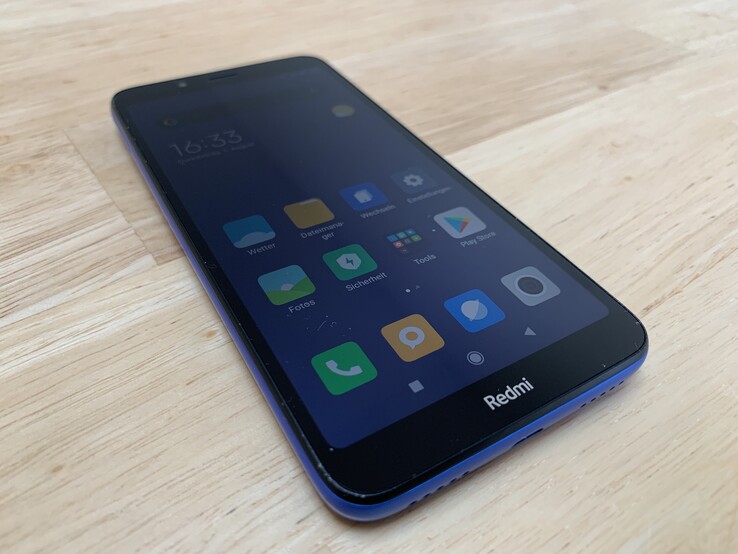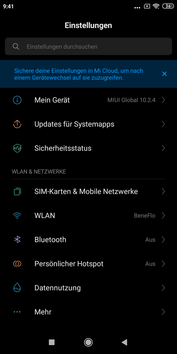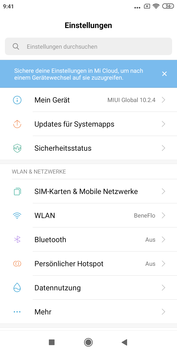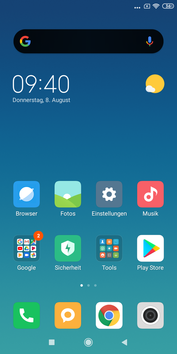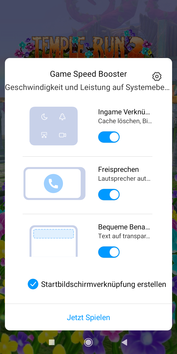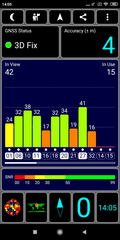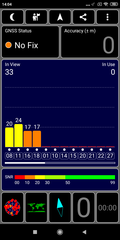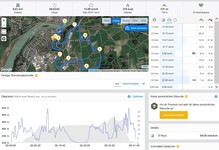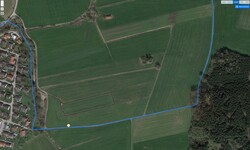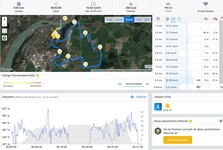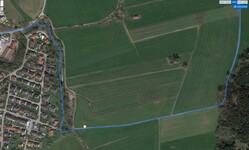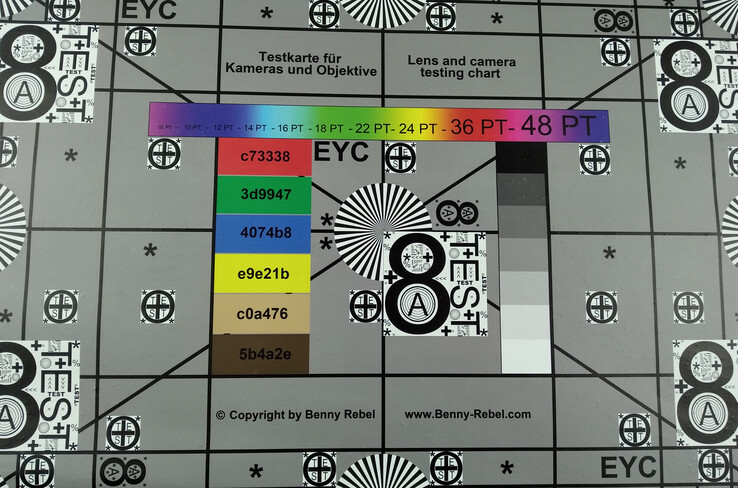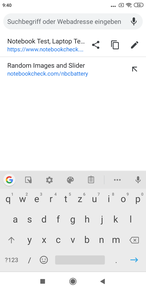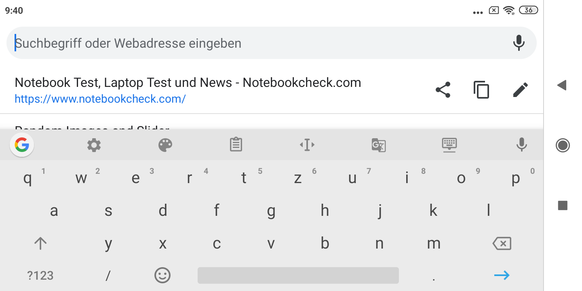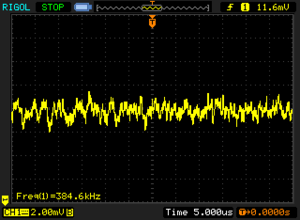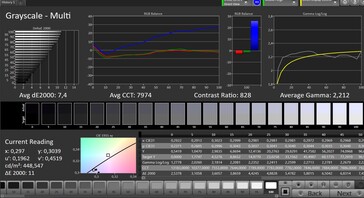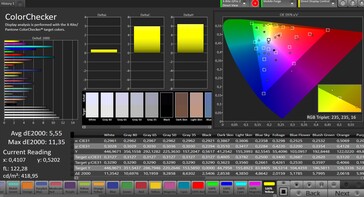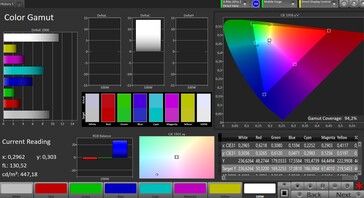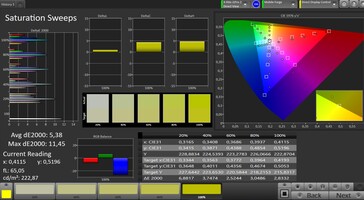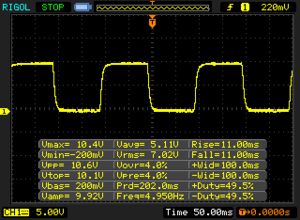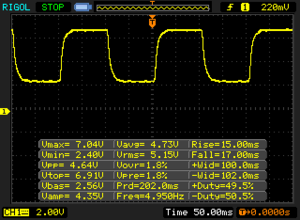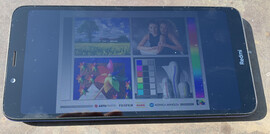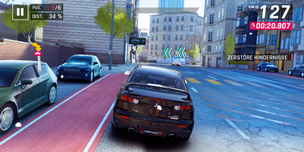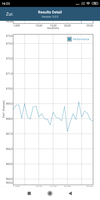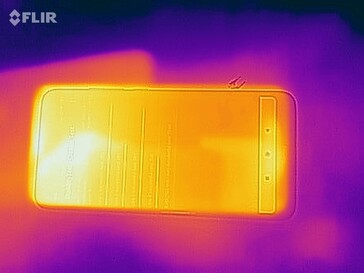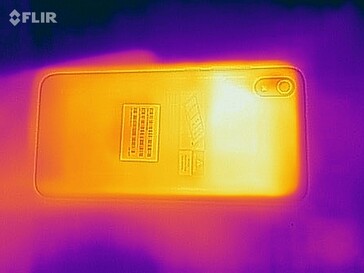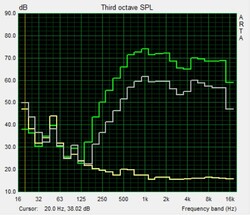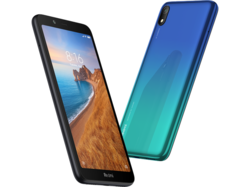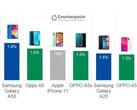Xiaomi Redmi 7A Smartphone Review – the cut-price phone
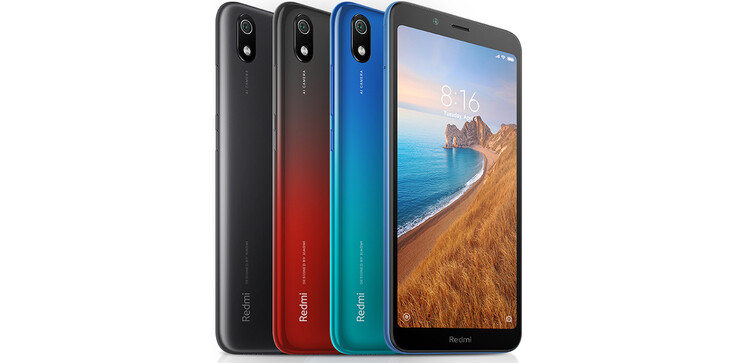
As far as Xiaomi is concerned, a smartphone can never be cheap enough. The Redmi 6A already packed a lot of performance into a stable case and offered a decent battery life for $100. Naturally, we are more than curious to see what the Chinese manufacturer has in store for us now. Are there further improvements? How will the phone compare to its predecessor? And, most importantly, can the Redmi 7A still impress us with its price-to-performance ratio?
Naturally, we will be comparing our test unit with its predecessor. Apart from that, there have not been many changes in this affordable segment of the smartphone market and there are hardly any new serious competitors to the Redmi 7A: The Honor 7A has a similar name, and also a similar price point to our test unit. The Nokia 2.1 and Motorola Moto E5 Play are two other possible competitors. If you are willing to spend a little more money, you might get a Huawei Y5.
Case – solid plastic case
The predecessor was already rather colorful, with the available options being blue and gold. Today's test unit is closer to the current trend on the smartphone market and offers optional blue or red color gradients on its back. Users can also choose a more subtle black or blue case with a matte back. The new color options look good and the matte, slightly roughened surface feels nice, too.
Xiaomi has made some minor design changes compared to the predecessor. The single camera on the back is now positioned vertically rather than horizontally. The front now features Redmi lettering and the speaker is positioned along the bottom rather than on the back of the device.
Pressure on the front of the screen is visible in the liquid crystal layer. Apart from that the Redmi 7A appears to be very robust. According to the manufacturer, it even has a water-repellant coating which protects it from light rain.
Our test unit is relatively heavy and weighs 20 grams (~0.7 oz) more than its predecessor. This is probably due to the larger battery. The smartphone is also slightly larger than its predecessor.
Connectivity – dedicated microSD slot
The Xiaomi Redmi 7A is available with 16 or 32 GB of storage and 2 GB of RAM. If you decide to go with the 16-GB version, you will have to make do with around 10 GB, as the remainder is taken up by the operating system. Both configurations are available for around $100. The fact that there is no fingerprint reader continues to be a weakness of the Redmi 7a. Its competitors such as the Honor 7A and the Motorola Moto E5 Play get a few extra points for this.
The storage can be expanded via microSD - the device even has a separate slot for memory cards, which means that users can use two SIM cards and a microSD card simultaneously. The reader supports cards that are formatted to exFAT. The memory card cannot be formatted as internal storage and apps cannot be stored on it either.
There is a micro-USB port along the bottom of the phone that supports USB 2.0 speeds.
Software – up-to-date MIUI
The Redmi 7A runs on MIUI 10, which is based on the current Android 9.0. The user interface (and the settings menu in particular) looks very different to standard Android. If you have been using Android for a long time, you should be able to adjust to this UI quickly nonetheless. Xiaomi published an update for the Redmi 7A during our test, which updated the security patches to 01.06.2019, which was still quite recent at the time of testing.
The device comes with some bloatware, but this can all be deleted completely. Xiaomi has also included some of its own tools, such as a compass app and an FM radio app.
Communication and GPS – more LTE frequencies
Although the SoC supports modern communication protocols, Xiaomi has limited the Wi-Fi speed to Wi-Fi 4 (802.11 n). This makes the Redmi 7A just as fast as its predecessor in our test with our Wi-Fi router Linksys EA8500. The results are good for this price range, as well.
Our test unit now supports a few more LTE networks compared to the Redmi 6A, which means that the Redmi7A is a little more worldly than its predecessor. The bands 2, 4 and 5 are new and are particularly useful in the US. The maximum LTE speeds for sending data are slightly faster than they were on the predecessor. Reception continues to be good.
| Networking | |
| iperf3 transmit AX12 | |
| Motorola Moto E5 Play | |
| Xiaomi Redmi 6A | |
| Huawei Y5 2019 | |
| Xiaomi Redmi 7A | |
| Nokia 2.1 | |
| Honor 7A | |
| iperf3 receive AX12 | |
| Average of class Smartphone (last 2 years) | |
| Huawei Y5 2019 | |
| Xiaomi Redmi 7A | |
| Xiaomi Redmi 6A | |
| Motorola Moto E5 Play | |
| Nokia 2.1 | |
| Honor 7A | |
Localization is not possible indoors. The phone takes some time outdoors, but eventually locates us within 4 meters (~13.1 ft). Google Maps, which uses not only satellite data but also other information for localization, cannot position us quite as precisely and the compass is not very exact either.
We took the Redmi 7A and the professional navigation system Garmin Edge 520 on a test ride on the bicycle. It turned out that the Xiaomi smartphone tracked our movements precisely enough, but did occasionally position us next to the path. If you are only interested in approximative navigation data, the precision of the Redmi 7A should be enough.
Telephone and Voice Quality – good via speakers
Xiaomi has created its own telephone app, which opens on the dial pad. Once you start dialing a number, the app shows you all suitable stored numbers. A second tab gives you access to the contacts list. According to the manufacturer, both SIM card slots support VoLTE. Xiaomi's operating system usually supports VoWi-Fi as well, although this was not mentioned explicitly for the Redmi 7A.
The voice quality via the earpiece is good but slightly muted. The microphone also mutes our voice a little but still transmits loud and quiet voices quite well. The speaker does a better job at transmitting our call partner's voice, but the microphone quality does not change on speakerphone.
Cameras – still single
Xiaomi has not made many changes to the camera. The back is equipped with a 12-MP sensor while the front features a 5-MP sensor. Both have a rather slow aperture of f/2.2. This camera set-up still beats most other devices in this price range.
Images taken with the main camera are not very well balanced with light areas appearing overexposed and dark areas lacking details. Like with the predecessor, edges and borders are depicted well and there are sufficient details. Photos taken in low lighting could be brighter and sharper. The Redmi 7A is well suited for snapshots. More demanding photographers can use the professional mode, but this smartphone will hardly meet their needs.
Videos can be recorded in Full-HD and at 30 fps with the main camera. The image quality and color display are quite good. Brightness adjusts quickly, but unfortunately the jumps between the various brightness levels are quite noticeable.
Xiaomi might want to add a couple of MPs to the front camera (currently 5 MP) in future generations. Still, we are quite happy with the photos taken with this lens. They display a fair amount of detail. However, edges tend to look a little frayed.
The main camera's qualities are also tested in our lab. Once again, the test chart confirms the low contrast - for example, it is almost impossible to read the black writing on dark blue background. The borders of letters and color gradients are displayed well, while edges are noticeably blurry.
Colors are displayed nicely, although they can occasionally be too bright.
Accessories and Warranty – quick-charge AC adapter
Apart from the AC adapter and the smartphone itself, the box includes a USB cable and a SIM tool. Please make sure that you are purchasing the global version of the Redmi 7A in order to get a suitable AC adapter and the necessary coverage of LTE bands.
The Redmi 7A has a 24-month warranty.
Input Devices & Handling – no fingerprint reader
The device uses Google's GBoard as the default virtual keyboard. It is clear and easy to use.
The device is not equipped with a fingerprint reader, which is a shame. Some other devices in this price range do feature this technology. Instead, Xiaomi has chosen to focus on face recognition as a tool to unlock the device. This works quite well but isn't as fast and secure as unlocking the smartphone via fingerprint.
The screen has a nice surface with good gliding properties. The touchscreen responds to our inputs quickly and precisely. The volume rocker and standby button are positioned on the right side of the case. They are clearly made of plastic but are solid and have good pressure points.
Display – Redmi with brighter screen
Not much has changed in terms of the display: The Redmi 7A is still equipped with a 2:1-panel with a resolution of 1440x720 pixels. However, today's panel is brighter than that of its predecessor and reaches 533 cd/m². The brightness distribution is also more even at 88 percent. The bezels around the display are relatively wide. The only competitor with narrow bezels is the Huawei Y5 2019 with its waterdrop notch.
| |||||||||||||||||||||||||
Brightness Distribution: 88 %
Center on Battery: 533 cd/m²
Contrast: 888:1 (Black: 0.6 cd/m²)
ΔE Color 5.6 | 0.5-29.43 Ø5
ΔE Greyscale 7.4 | 0.57-98 Ø5.3
94.2% sRGB (Calman 2D)
Gamma: 2.212
| Xiaomi Redmi 7A IPS, 1440x720, 5.45 | Xiaomi Redmi 6A IPS, 1440x720, 5.45 | Honor 7A IPS, 1440x720, 5.70 | Nokia 2.1 IPS, 1280x720, 5.50 | Motorola Moto E5 Play IPS, 960x480, 5.20 | Huawei Y5 2019 IPS, 1520x720, 5.71 | |
|---|---|---|---|---|---|---|
| Screen | 21% | 25% | 6% | -28% | 6% | |
| Brightness middle | 533 | 404 -24% | 417 -22% | 338 -37% | 369 -31% | 630 18% |
| Brightness | 506 | 400 -21% | 395 -22% | 327 -35% | 358 -29% | 593 17% |
| Brightness Distribution | 88 | 82 -7% | 88 0% | 82 -7% | 81 -8% | 88 0% |
| Black Level * | 0.6 | 0.26 57% | 0.18 70% | 0.27 55% | 0.4 33% | 0.66 -10% |
| Contrast | 888 | 1554 75% | 2317 161% | 1252 41% | 923 4% | 955 8% |
| Colorchecker dE 2000 * | 5.6 | 4.28 24% | 6.46 -15% | 5.36 4% | 9.75 -74% | 5.79 -3% |
| Colorchecker dE 2000 max. * | 11.4 | 9.97 13% | 10.72 6% | 9.77 14% | 18.28 -60% | 9.54 16% |
| Greyscale dE 2000 * | 7.4 | 3.5 53% | 5.8 22% | 6.2 16% | 11.8 -59% | 7 5% |
| Gamma | 2.212 99% | 2.213 99% | 2.423 91% | 2.345 94% | 2.057 107% | 2.176 101% |
| CCT | 7974 82% | 6899 94% | 7839 83% | 8460 77% | 11971 54% | 8420 77% |
| Color Space (Percent of sRGB) | 78.6 |
* ... smaller is better
Screen Flickering / PWM (Pulse-Width Modulation)
| Screen flickering / PWM detected | 384.6 Hz | ≤ 10 % brightness setting | |
The display backlight flickers at 384.6 Hz (worst case, e.g., utilizing PWM) Flickering detected at a brightness setting of 10 % and below. There should be no flickering or PWM above this brightness setting. The frequency of 384.6 Hz is relatively high, so most users sensitive to PWM should not notice any flickering. However, there are reports that some users are still sensitive to PWM at 500 Hz and above, so be aware. In comparison: 53 % of all tested devices do not use PWM to dim the display. If PWM was detected, an average of 17924 (minimum: 5 - maximum: 3846000) Hz was measured. | |||
The black value is significantly higher than that of its predecessor and is the worst in our entire comparison field at 0.6 cd/m². Consequently, the contrast is relatively mediocre at 888:1. This causes dark areas on the display to appear gray and content in general to appear rather flat.
We noticed flickering at a frequency of 384.6 Hz at brightness levels below 10 percent. This is probably caused by PWM, which is used to regulate brightness. Usually, this should not be an issue at high frequencies. If you know that you are sensitive in this area, you might want to try out the phone before purchase.
The spectrophotometer and CalMAN software confirmed a slight blue cast. The color deviation is relatively high in general and particularly turquoise and blue tones deviate quite strongly.
Display Response Times
| ↔ Response Time Black to White | ||
|---|---|---|
| 22 ms ... rise ↗ and fall ↘ combined | ↗ 11 ms rise | |
| ↘ 11 ms fall | ||
| The screen shows good response rates in our tests, but may be too slow for competitive gamers. In comparison, all tested devices range from 0.1 (minimum) to 240 (maximum) ms. » 42 % of all devices are better. This means that the measured response time is similar to the average of all tested devices (21.5 ms). | ||
| ↔ Response Time 50% Grey to 80% Grey | ||
| 32 ms ... rise ↗ and fall ↘ combined | ↗ 15 ms rise | |
| ↘ 17 ms fall | ||
| The screen shows slow response rates in our tests and will be unsatisfactory for gamers. In comparison, all tested devices range from 0.2 (minimum) to 636 (maximum) ms. » 36 % of all devices are better. This means that the measured response time is similar to the average of all tested devices (33.7 ms). | ||
The viewing angles are good thanks to the IPS screen and content is still easily legible at very wide angles, although the fact that the display's black value isn't great becomes more obvious at high brightness.
Content remains legible in bright surroundings outdoors, but we would recommend avoiding direct sunlight as this does cause strong reflections on the display.
Performance – a lot of power for little money
The Xiaomi Redmi 7A is equipped with a Qualcomm Snapdragon 439, which is also used in the Nokia 4.2 (available for almost double the price at $185). The SoC has eight cores with a maximum clock rate of 2 GHz. The performance increase compared to its predecessor and its similarly priced competitors is quite noticeable: In Geekbench, which only looks at processor performance, the performance of our Redmi 7A is 19 percent higher than that of its predecessor. Our test unit also managed to beat the more expensive Huawei Y5 2019.
The graphics department is taken care of by an Adreno 505, which also proves to be faster than its competitors in most benchmarks.
Subjectively, the system performance of the Redmi 7A is fast enough, operation is smooth and we only noticed occasional judders when switching between apps or when there were several apps running in the background.
| GFXBench 3.1 | |
| on screen Manhattan ES 3.1 Onscreen (sort by value) | |
| Xiaomi Redmi 7A | |
| Xiaomi Redmi 6A | |
| Honor 7A | |
| Nokia 2.1 | |
| Motorola Moto E5 Play | |
| Huawei Y5 2019 | |
| Average Qualcomm Snapdragon 439 (6 - 14, n=6) | |
| Average of class Smartphone (3.7 - 158, n=184, last 2 years) | |
| 1920x1080 Manhattan ES 3.1 Offscreen (sort by value) | |
| Xiaomi Redmi 7A | |
| Xiaomi Redmi 6A | |
| Honor 7A | |
| Nokia 2.1 | |
| Motorola Moto E5 Play | |
| Huawei Y5 2019 | |
| Average Qualcomm Snapdragon 439 (6.4 - 6.6, n=6) | |
| Average of class Smartphone (6.2 - 279, n=184, last 2 years) | |
| AnTuTu v7 - Total Score (sort by value) | |
| Xiaomi Redmi 7A | |
| Xiaomi Redmi 6A | |
| Honor 7A | |
| Motorola Moto E5 Play | |
| Huawei Y5 2019 | |
| Average Qualcomm Snapdragon 439 (75175 - 79792, n=3) | |
The Redmi smartphone is one of the fastest of its price range in terms of browsing the web. We got the impression that websites loaded images and other content quickly.
| Jetstream 2 - Total Score | |
| Average of class Smartphone (13.8 - 351, n=172, last 2 years) | |
| Xiaomi Redmi 7A (Chrome 76) | |
| Average Qualcomm Snapdragon 439 (15.9 - 16.9, n=5) | |
| Huawei Y5 2019 (Chrome 74) | |
| Speedometer 2.0 - Result | |
| Average of class Smartphone (14.9 - 445, n=157, last 2 years) | |
| Xiaomi Redmi 7A (Chome 76) | |
| Average Qualcomm Snapdragon 439 (17.4 - 18.5, n=5) | |
| Huawei Y5 2019 (Chome 74) | |
| WebXPRT 3 - Overall | |
| Average of class Smartphone (39 - 304, n=122, last 2 years) | |
| Average Qualcomm Snapdragon 439 (32 - 38, n=6) | |
| Huawei Y5 2019 (Chrome 74) | |
| Xiaomi Redmi 7A (Chrome 76) | |
| Xiaomi Redmi 6A (Chrome 70) | |
| Octane V2 - Total Score | |
| Average of class Smartphone (4633 - 89112, n=210, last 2 years) | |
| Average Qualcomm Snapdragon 439 (4512 - 4958, n=6) | |
| Xiaomi Redmi 7A (Chrome 76) | |
| Huawei Y5 2019 (Chrome 74) | |
| Xiaomi Redmi 6A (Chrome 70) | |
| Honor 7A (Chrome 67) | |
| Nokia 2.1 (Chrome 70) | |
| Motorola Moto E5 Play | |
| Mozilla Kraken 1.1 - Total | |
| Honor 7A (Chrome 67) | |
| Nokia 2.1 (Chrome 70) | |
| Motorola Moto E5 Play | |
| Xiaomi Redmi 6A (Chrome 70) | |
| Huawei Y5 2019 (Chrome 74) | |
| Xiaomi Redmi 7A (Chrome 76) | |
| Average Qualcomm Snapdragon 439 (9768 - 10143, n=6) | |
| Average of class Smartphone (388 - 9999, n=172, last 2 years) | |
* ... smaller is better
Our test unit reached class average transfer rates with our external memory card Toshiba Exceria Pro M501. The internal storage, however, is not particularly fast. Xiaomi had equipped the predecessor, Redmi 6A, with a faster eMMC flash storage.
| Xiaomi Redmi 7A | Xiaomi Redmi 6A | Honor 7A | Nokia 2.1 | Motorola Moto E5 Play | Huawei Y5 2019 | Average 16 GB eMMC Flash | Average of class Smartphone | |
|---|---|---|---|---|---|---|---|---|
| AndroBench 3-5 | 84% | -5% | 1% | 43% | 1% | -37% | 1263% | |
| Sequential Read 256KB | 258 | 277.5 8% | 254.8 -1% | 288.3 12% | 279 8% | 272.1 5% | 164.5 ? -36% | 1505 ? 483% |
| Sequential Write 256KB | 68.7 | 131.7 92% | 72.5 6% | 51.2 -25% | 52.2 -24% | 45.2 -34% | 43 ? -37% | 1112 ? 1519% |
| Random Read 4KB | 57.8 | 33.94 -41% | 39.2 -32% | 50.5 -13% | 46.31 -20% | 62.1 7% | 21.7 ? -62% | 247 ? 327% |
| Random Write 4KB | 9.6 | 52.2 444% | 9.4 -2% | 13.45 40% | 43.16 350% | 13.1 36% | 8.08 ? -16% | 271 ? 2723% |
| Sequential Read 256KB SDCard | 85.2 ? | 82.8 ? -3% | 84.9 ? 0% | 79.4 ? -7% | 83.7 ? -2% | 81.8 ? -4% | 59.1 ? -31% | |
| Sequential Write 256KB SDCard | 64.6 ? | 65.7 ? 2% | 65.4 ? 1% | 61.9 ? -4% | 28.83 ? -55% | 63.1 ? -2% | 39.8 ? -38% |
Games – the Redmi is suitable for games
The Adreno 505 in our Redmi 7A is definitely suitable for gaming and supports a lot of gaming APIs, which means it should also be future-proof for the next few years. Its performance is good enough to play Arena of Valor smoothly at 30 fps and at high details. (However, the HD mode cannot be activated in the game.) The settings do not seem to have a noticeable impact on frame rates in Asphalt 9. They remain at around 30 fps throughout with only minor judders. The frame rates are determined using the app GameBench.
The Redmi 7A is not made for hardcore gamers, but if you are interested in simpler games, you should be perfectly happy with this phone. The touchscreen and gyroscope work well and let you control games precisely.
Emissions – great speakers
Temperature
The Xiaomi phone heats up to 40.5 °C (104.9 °F) max under high load. This is still acceptable, although the smartphone might become a little uncomfortable to touch after long gaming sessions on hot days. The bottom of the Redmi 7A remains slightly cooler. We did not notice any particular heat development while idling.
The performance of the SoC remains stable under continuous load, which we measured with the GFXBench battery test
(±) The maximum temperature on the upper side is 40.5 °C / 105 F, compared to the average of 35 °C / 95 F, ranging from 21.9 to 56 °C for the class Smartphone.
(+) The bottom heats up to a maximum of 39.9 °C / 104 F, compared to the average of 33.8 °C / 93 F
(±) In idle usage, the average temperature for the upper side is 32.8 °C / 91 F, compared to the device average of 32.7 °C / 91 F.
Speaker
The speaker is positioned on the bottom of the device, which is a better placement than last time. Our test with the ARTA software shows that the speaker is also a little louder than that of its predecessor, which is good news. Bass frequencies are still not audible, but at least the low mids are more present on this phone.
Subjectively, the sound of the Redmi 7A is really good for this price range. It is quite warm and there are no noticeable distortions even at maximum volume. Audio is not quite as clear as on more expensive smartphones, but for $100, it is impressive. You can connect external speakers or headphones via the 3.5-mm audio jack or Bluetooth. This works well; the phone transmits a nice, clean sound.
Xiaomi Redmi 7A audio analysis
(+) | speakers can play relatively loud (82 dB)
Bass 100 - 315 Hz
(-) | nearly no bass - on average 67.5% lower than median
(+) | bass is linear (0% delta to prev. frequency)
Mids 400 - 2000 Hz
(-) | nearly no mids - on average 67.5% lower than median
(+) | mids are linear (0% delta to prev. frequency)
Highs 2 - 16 kHz
(-) | nearly no highs - on average 67.5% lower than median
(+) | highs are linear (0% delta to prev. frequency)
Overall 100 - 16.000 Hz
(-) | overall sound is not linear (126.1% difference to median)
Compared to same class
» 95% of all tested devices in this class were better, 4% similar, 1% worse
» The best had a delta of 12%, average was 38%, worst was 134%
Compared to all devices tested
» 99% of all tested devices were better, 1% similar, 0% worse
» The best had a delta of 4%, average was 25%, worst was 134%
Xiaomi Redmi 6A audio analysis
(±) | speaker loudness is average but good (77.8 dB)
Bass 100 - 315 Hz
(-) | nearly no bass - on average 30.6% lower than median
(±) | linearity of bass is average (8.3% delta to prev. frequency)
Mids 400 - 2000 Hz
(+) | balanced mids - only 4.7% away from median
(+) | mids are linear (6% delta to prev. frequency)
Highs 2 - 16 kHz
(+) | balanced highs - only 3.7% away from median
(+) | highs are linear (2% delta to prev. frequency)
Overall 100 - 16.000 Hz
(±) | linearity of overall sound is average (27.3% difference to median)
Compared to same class
» 66% of all tested devices in this class were better, 6% similar, 28% worse
» The best had a delta of 12%, average was 38%, worst was 134%
Compared to all devices tested
» 80% of all tested devices were better, 4% similar, 15% worse
» The best had a delta of 4%, average was 25%, worst was 134%
Battery Life – the Xiaomi phone just keeps on going
Power Consumption
The Xiaomi Redmi 7A is not really efficient in terms of power consumption but manages to position itself in the midrange of its class. The maximum consumption of 5.4 watts under maximum load is quite high while the minimum of 0.8 watts while idling is rather low.
| Off / Standby | |
| Idle | |
| Load |
|
| Xiaomi Redmi 7A 4000 mAh | Xiaomi Redmi 6A 3000 mAh | Honor 7A 3000 mAh | Nokia 2.1 4000 mAh | Motorola Moto E5 Play 2120 mAh | Huawei Y5 2019 3020 mAh | Average Qualcomm Snapdragon 439 | Average of class Smartphone | |
|---|---|---|---|---|---|---|---|---|
| Power Consumption | 17% | -22% | 16% | -3% | -10% | -10% | -15% | |
| Idle Minimum * | 0.8 | 0.7 12% | 1.3 -63% | 0.7 12% | 1.2 -50% | 1.2 -50% | 0.82 ? -3% | 0.897 ? -12% |
| Idle Average * | 1.6 | 1.2 25% | 1.6 -0% | 1.2 25% | 1.6 -0% | 1.9 -19% | 2.21 ? -38% | 1.452 ? 9% |
| Idle Maximum * | 2.2 | 2 9% | 2.9 -32% | 1.9 14% | 2 9% | 2.4 -9% | 2.49 ? -13% | 1.629 ? 26% |
| Load Average * | 3.9 | 3.4 13% | 3.7 5% | 3.2 18% | 3.6 8% | 3.3 15% | 3.78 ? 3% | 5.55 ? -42% |
| Load Maximum * | 5.4 | 4 26% | 6.4 -19% | 4.8 11% | 4.5 17% | 4.6 15% | 5.24 ? 3% | 8.31 ? -54% |
* ... smaller is better
Battery Life
The battery can be considered one of the centerpieces of the Redmi 7A with its capacity of 4000 mAh. That's hard to find for $100. The Xiaomi Redmi 7A reaches a runtime of 14:13 hours in our Wi-Fi test and easily manages to outpace all of its competitors. It lasts about 1.5 hours longer than its predecessor and even the Nokia 2.1, which is also equipped with a 4000-mAh battery, cannot keep up.
On top of that, the device comes with a quick-charge AC adapter, which recharges the smartphone in less than two hours. That's impressive for such an affordable smartphone.
| Xiaomi Redmi 7A 4000 mAh | Xiaomi Redmi 6A 3000 mAh | Honor 7A 3000 mAh | Nokia 2.1 4000 mAh | Motorola Moto E5 Play 2120 mAh | Huawei Y5 2019 3020 mAh | |
|---|---|---|---|---|---|---|
| Battery Runtime | -11% | -23% | -5% | -55% | -17% | |
| Reader / Idle | 1543 | 1256 -19% | ||||
| H.264 | 902 | 732 -19% | ||||
| WiFi v1.3 | 853 | 761 -11% | 657 -23% | 809 -5% | 382.9 -55% | 709 -17% |
| Load | 286 | 249 -13% |
Pros
Cons
Verdict – So affordable and so strong
Xiaomi's Redmi phones are price cutters - they continually set new standards in their price range: The Remi 7A is available for around $100 (depending on the configuration) and offers features that we usually only see in smartphones that are double the price. For example, the phone runs on a Snapdragon 439, a powerful SoC that offers a lot of bang for your buck. The very long battery life, the great speakers and gaming suitability round off the set of great features. The camera takes decent pictures, the display is bright and heat development is tolerable under load. The new color options give the Xiaomi phone a fresh, modern look that also feels very comfortable to hold. Thanks to the quick-charge function, the smartphone also recharges quickly.
That's quite a collection of strengths for such an affordable device and hardly any competitor in this price range can match it. The phone even beats its predecessor with a longer battery life and increased performance. The fact that the Redmi A models are not equipped with a fingerprint reader is a shame, however, as is the imprecise GPS and the slightly muted earpiece.
If you are looking for an affordable smartphone and still want good performance and a long battery life, the Redmi 7A might be the right phone for you.
We can definitely recommend the Xiaomi Redmi 7A. Just make sure to purchase the global version from a reliable reseller, as you might otherwise have issues with the AC adapter and warranty.
Xiaomi Redmi 7A
-
08/08/2019 v6(old)
Florian Schmitt


 Deutsch
Deutsch English
English Español
Español Français
Français Italiano
Italiano Nederlands
Nederlands Polski
Polski Português
Português Русский
Русский Türkçe
Türkçe Svenska
Svenska Chinese
Chinese Magyar
Magyar